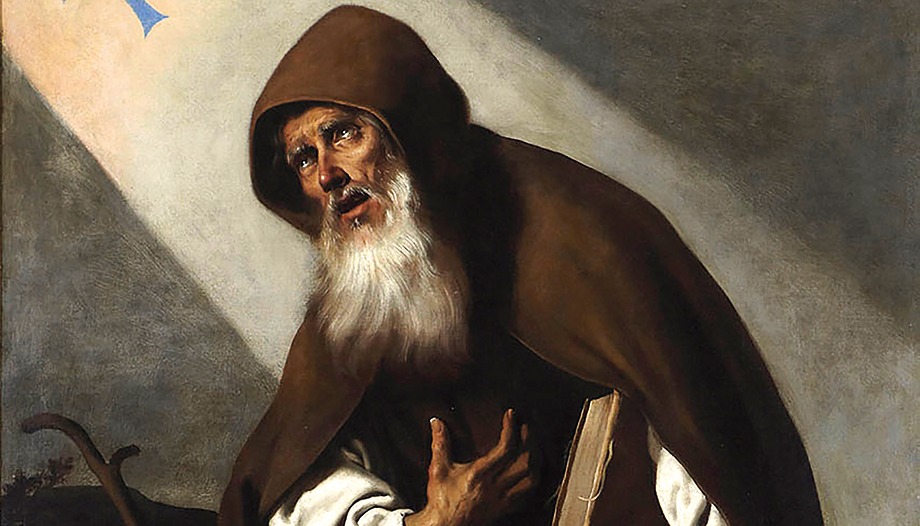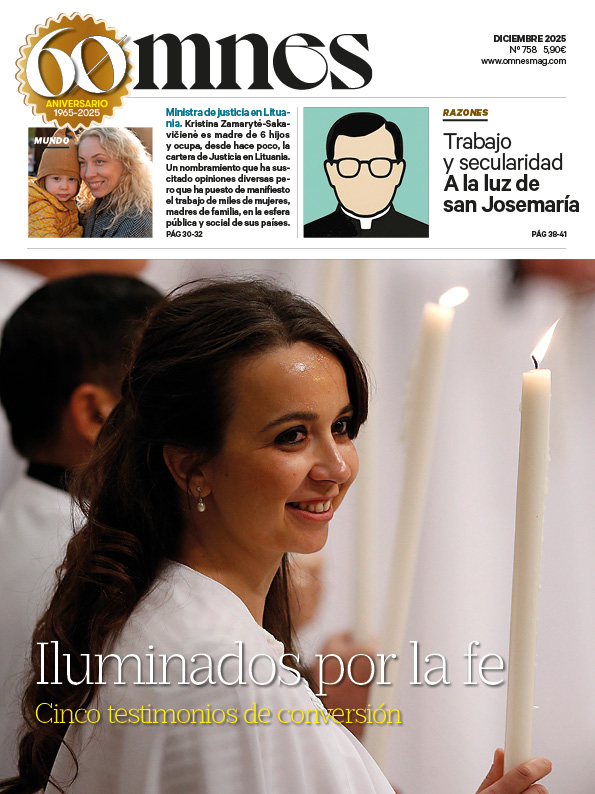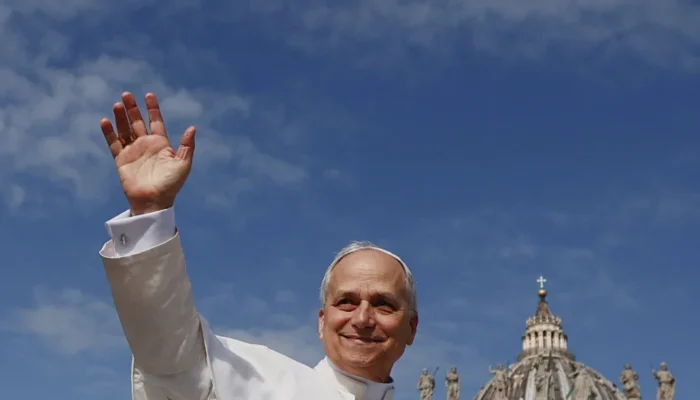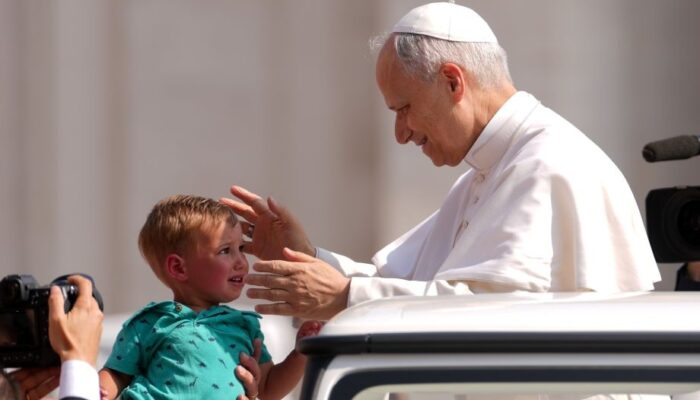During the first three centuries of Christianity, communities living their faith in Jesus Christ formed an extensive network throughout the Roman Empire. We have seen how, instructed, encouraged, and protected by the Holy FathersChristians fulfilled to the full the role of being leaven in the midst of the world that Jesus entrusted to them in his teaching. Organized in small, lively communities, presided over by a bishop and served by a college of priests, the Christians sowed in the world the seeds of the leaven that Jesus entrusted to them in his teaching. pagan world with abundance. In the world they carried out their apostolate, suffered conflicts, dialogued with different cultures, suffered persecutions, and went through different political scenarios until, in the end, the Roman Empire became Christian.
A new path
Alongside this path of Christians in the midst of the world, we find a small path, which, although at the beginning was hidden, in time gave rise to a broad and new way of living the Christian life. We refer to the Christians who decided to live a particular consecration to God, first living in the world and then leaving it to live in the desert.
From the beginning, in fact, there were Christians who discovered as their own vocation to live as closely as possible the counsel of asceticism preached by Jesus of Nazareth: "If any man will come after me, let him deny himself and take up his cross and follow me."(Mk 8:34). Thus, both in the New Testament and in the early Fathers of the Church, we find testimonies to this form of life, which would soon become concrete in virginity and in the continent's life in the world, as a way of living renunciation in order to imitate Jesus and attain the fullness of contemplation in following him.
Therefore, in many places in the East, but especially in Egypt, many Christians took up this ideal of evangelical life or apostolic life, complementary to the ideal of the majority of Christians, who lived as leaven in the midst of the world. It was only a matter of time before this ideal moved many to a stricter imitation, going out of the world to live the radical following of Jesus in the solitude of the desert, living alone, as monks, just as Jesus in his public life assiduously withdrew to the solitude of desert places to give himself to prayer and intimate contemplation of his Father God.
Anchorite monks
Throughout the third century, coinciding with the great persecutions, we find great figures of ancient Christianity who fled to the desert, not to escape imperial violence, but to flee the corruption and toxic vanity of the still pagan world. This fuga mundi He rejected a society that lived for worldly glory, the lust for luxury, self-celebration of self and the desire to leave a glorious memory for posterity.
In contrast to this approach, the call to live alone (monachós in Greek, from which the Latin will come from monachusThe desert will entail seeking humility, detachment, austerity, silence, hidden living and self-forgetfulness. Not out of mere opposition to the world, but in order to manifest before it "all that is necessary"(Lk 10:42), which is the contemplation of divine realities, and to imitate the life of Jesus Christ as a solitary prayerful person in desert places.
In the desert, like Jesus, the monk who has renounced his family, his patrimony, his affections, and himself, to dedicate himself to solitude and prayer, will suffer a hard fight from the devil, as Jesus Christ suffered in the desert of Judea. He will not lack temptations, harassments, attacks and seductions; neither will he lack the violence of the world nor the attacks of wild beasts. But he will emerge triumphant from all of them thanks to God's blessing and his personal ascetic effort to conquer the virtues.
This is the story told by the numerous Lives that have come down to us from the so-called Desert Fathers, the first anchorites (the separatedThe most important is the one written by St. Athanasius about St. Anthony Abbot, the true father of this new monastic experience in solitude. The most important is the one written by St. Athanasius about St. Anthony Abbot, the true father of this new monastic experience in solitude. In it he narrates the conversion of St. Anthony, his beginnings in the hard experience as an anchorite, his life first among tombs and then in the Egyptian deserts. And it reveals that the saint's reputation for holiness and wisdom, the fruit of his generous dedication to the imitation and following of Jesus Christ, brought him numerous disciples.
As we can imagine, the Fathers of this desert monasticism did not dedicate themselves to writing books, like the other Fathers we are looking at in this series. Much less their own biography. But, fortunately, their disciples, and those of the other early desert fathers, were collected in collections called Apotegmas. Each of these narratives presents us with the thread of an anecdote from the monk's life, a dialogue in which the monk teaches his disciple. And the fact is that more and more Christians began a disciple's journey with these venerated anchorites, looking for "....successfully practice the heavenly life and walk the way of the kingdom of Heaven"as we are told by a former apothegm.
The cenobitic movement
Over time, this individual experience, somewhat charismatic and surprisingly contagious, gave rise to a progressive configuration of institutions, community organization and literary production. This is what we know as cenobism (from koinós-bios(community of life in Greek). Communities of anchorites were forming with a first form of common life, already guided by a written rule, in the great areas of Christianity: Egypt, Palestine, Syria or Cappadocia.
Egypt, especially the desert around Thebes (what is known as the Thebaid), must be highlighted as the place of origin of this movement, as it was also the place of origin of the life of the anchorites. Pachomius is the great patriarch of cenobitic life, writer of the first monastic rule and initiator of an important series of great heroes of ancient monasticism, such as Shenute, Porphyry, Sabas or Euthymius. The lives of these fathers were read as biographies of authentic heroes of spirituality, who inspired many Christians in their experience of cenobitic life. During the IV and V centuries, with Christianity already fully established in the Roman Empire, the collections of apothegms and biographies of these desert fathers, as we can see in the Lausanne HistoryPalladius, a curious encyclopedia of these great heroes of asceticism and their spiritual teachings.
Because we cannot forget that what is essential in this experience is not the personal ascetic effort or the radicality of the renunciations, but the spiritual grace that God puts in these people by calling them to life in the desert. Hence the teachings of these fathers are an inexhaustible source of spiritual nourishment. In this sense, those compiled by authors such as Evagrius Ponticus or Cassian (IV-V centuries) are of great value.
Specifically, the Practical treatise and the About prayer of Evagrius are an essential reference for understanding the monastic spirituality of the Eastern Church, which later had such a great influence on the various currents of cenobism in the Latin Church. From the second work, which seeks to instruct the disciple in impassibility and contemplation, following the ancient traditions of the early fathers, come the quotations that accompany this article.
Surely they still have much to say today to those who, inside or outside the world, seek a greater identification with Jesus Christ and a greater spiritual depth in following him.
Doctor of Theology








